Isola dell'amore
12 Lug, 2024
- ENGLISH VERSION BELOW -
La costa occidentale dell'Adriatico settentrionale non offre molta protezione per l'ancoraggio a causa della sua conformazione: non ci sono baie e l'unico riparo è costituito dalle numerose lagune create dalla foce del fiume Po. Il problema, però, è la bassa profondità e il fondale sempre mutevole a causa della sabbia portata dai fiumi che crea banchi, particolarmente pericolosi per una barca a vela a causa del suo pescaggio.
Tuttavia, eravamo motivati a trascorrere la nostra prima notte all'ancora e non appena si è presentata la finestra meteorologica giusta (con venti deboli e poca onda) abbiamo deciso di partire! Da qualche tempo, mentre perlustravamo la zona circostante alla ricerca di bei posti da vedere, abbiamo notato l'Isola dell'Amore: la nostra destinazione era fissata.
Si tratta di una sottile striscia di sabbia, lunga circa 6 km e larga 300 metri. Su cui l'unica struttura presente è un faro e gli unici abitanti sono gli uccelli che hanno trovato qui il luogo perfetto per nidificare. Ci sono più di 350 specie su questa piccola isola che chiude la Sacca di Goro.
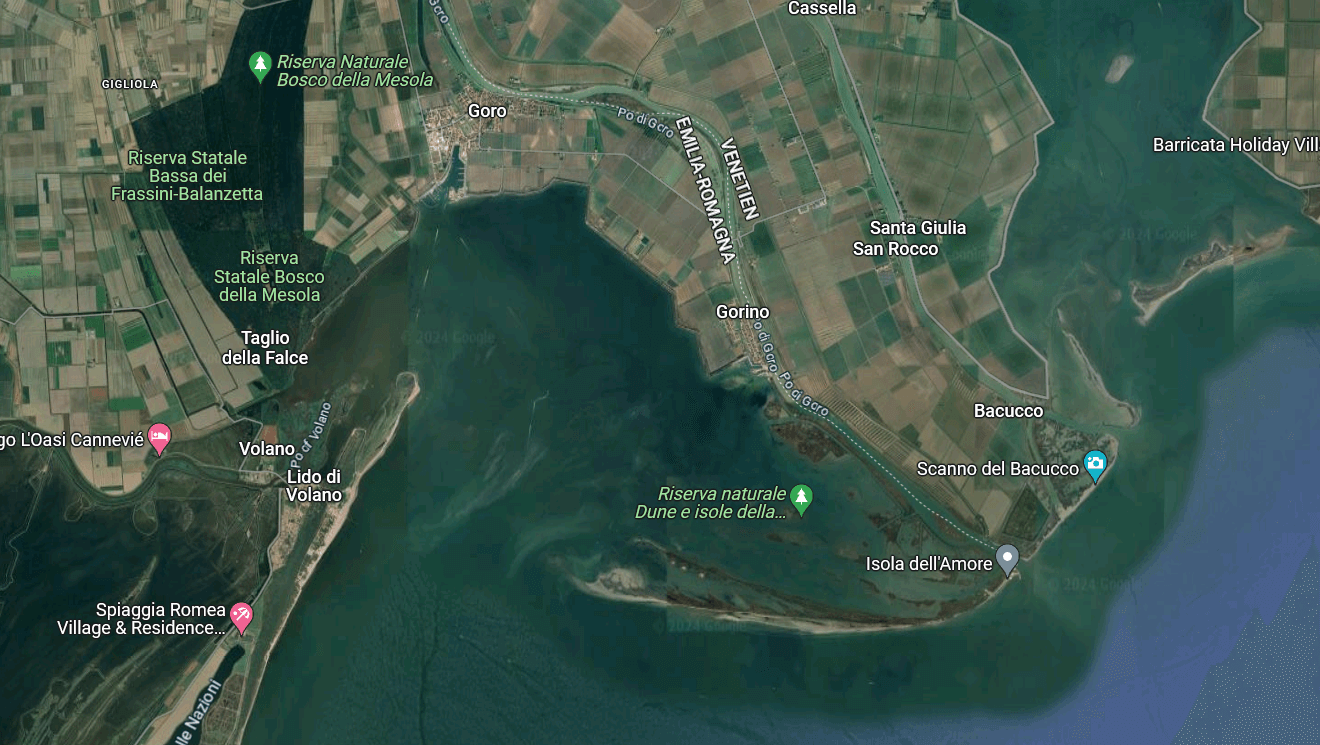
Vista satellitare dell'Isola dell'amore e della Sacca di Goro a nord.
Lunedì mattina, dopo una buona colazione, siamo salpati verso la nostra destinazione.
La navigazione è stata abbastanza facile: l'unico pericolo è un enorme allevamento di cozze che abbiamo deciso di lasciare a ovest della nostra rotta. E i tronchi galleggianti portati al largo dalle foci dei fiumi.
Abbiamo colto l'occasione per testare il nostro autopilota che ha funzionato bene, anche se ha bisgono di qualche miglioria nel modo in cui è installato (di cui parleremo in uno dei prossimi post).
Questo ci ha dato la possibilità di trascorrere il viaggio seduti all'ombra delle vele e di controllare la barca con il telecomando dell'autopilota per evitare i detriti.
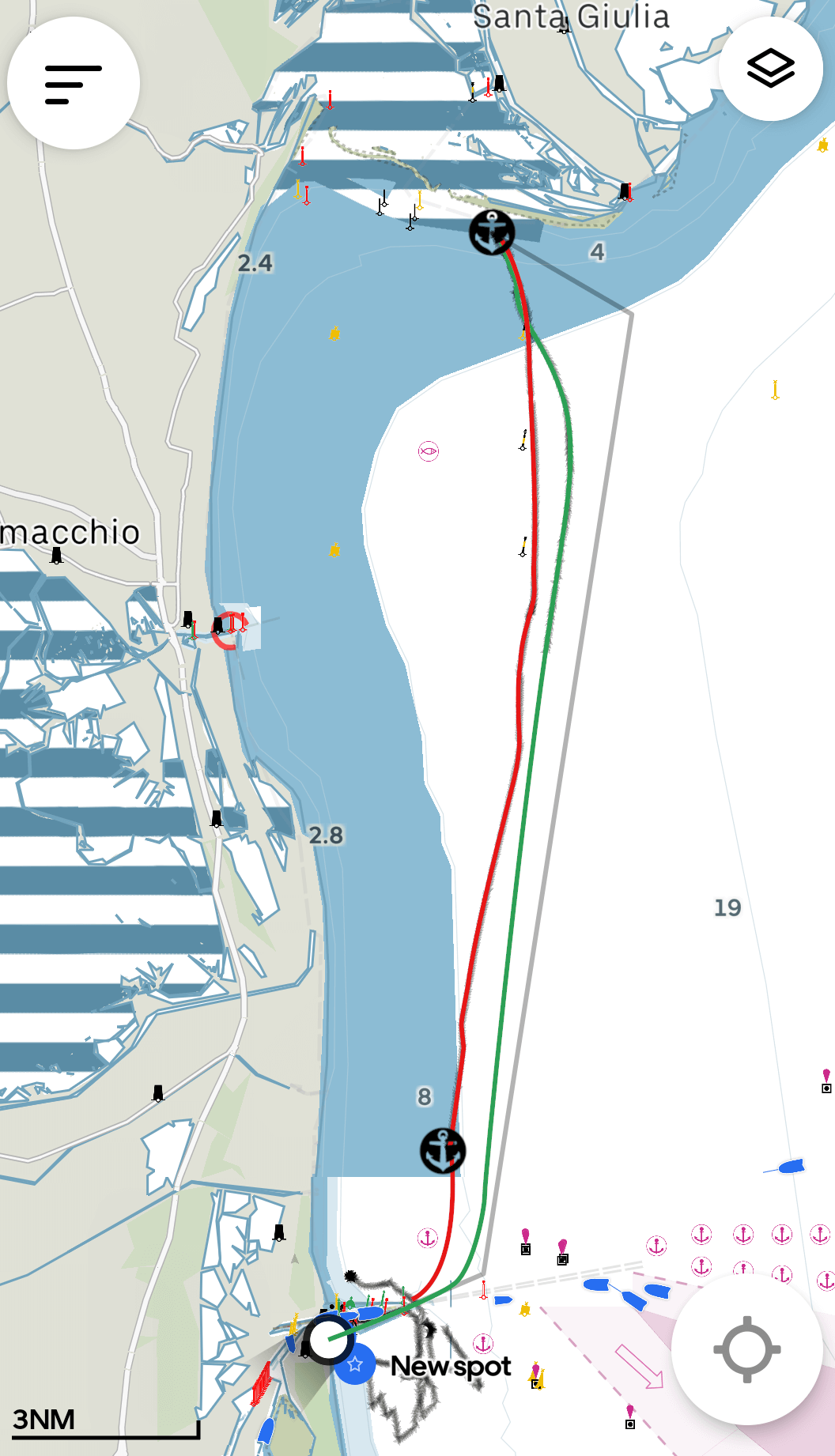
Le tracce delle nostre rotte e le nostre fermate: in verde l'andata e in rosso il ritorno.
Durante il viaggio abbiamo fatto il nostro primo incontro inaspettato: abbiamo visto una piccola tartaruga che nuotava lentamente a pancia in su!
Abbiamo completato il viaggio di 20 miglia nautiche in 4 ore e mezza, con una media di 4,4 nodi: abbiamo avuto poco vento (come previsto) e alla fine, quando l'isola era già in vista, abbiamo dovuto accendere il motore quando il vento era completamente calato.
Una volta a destinazione, abbiamo calato l'ancora in 5 metri d'acqua e ci siamo ritrovati completamente soli con centinaia di uccelli: gabbiani, cormorani, fenicotteri e molti altri che non siamo riusciti a riconoscere.
È ora di riordinare la barca, montare la tenda al boma e fare il bagno! Finalmente un po' di acqua fresca e pulita: purtroppo quest'anno c'è mucillagine in buona parte dell'Adriatico, e siamo stati così felici di avere questo tratto di mare pulito solo per noi.
Abbiamo trascorso il resto della giornata tra tuffi rinfrescanti, perlustrazioni della costa con il binocolo per osservare gli uccelli, con i pesci che saltavano fuori dall'acqua tutto intorno a noi e con una meritata cena: che paradiso!
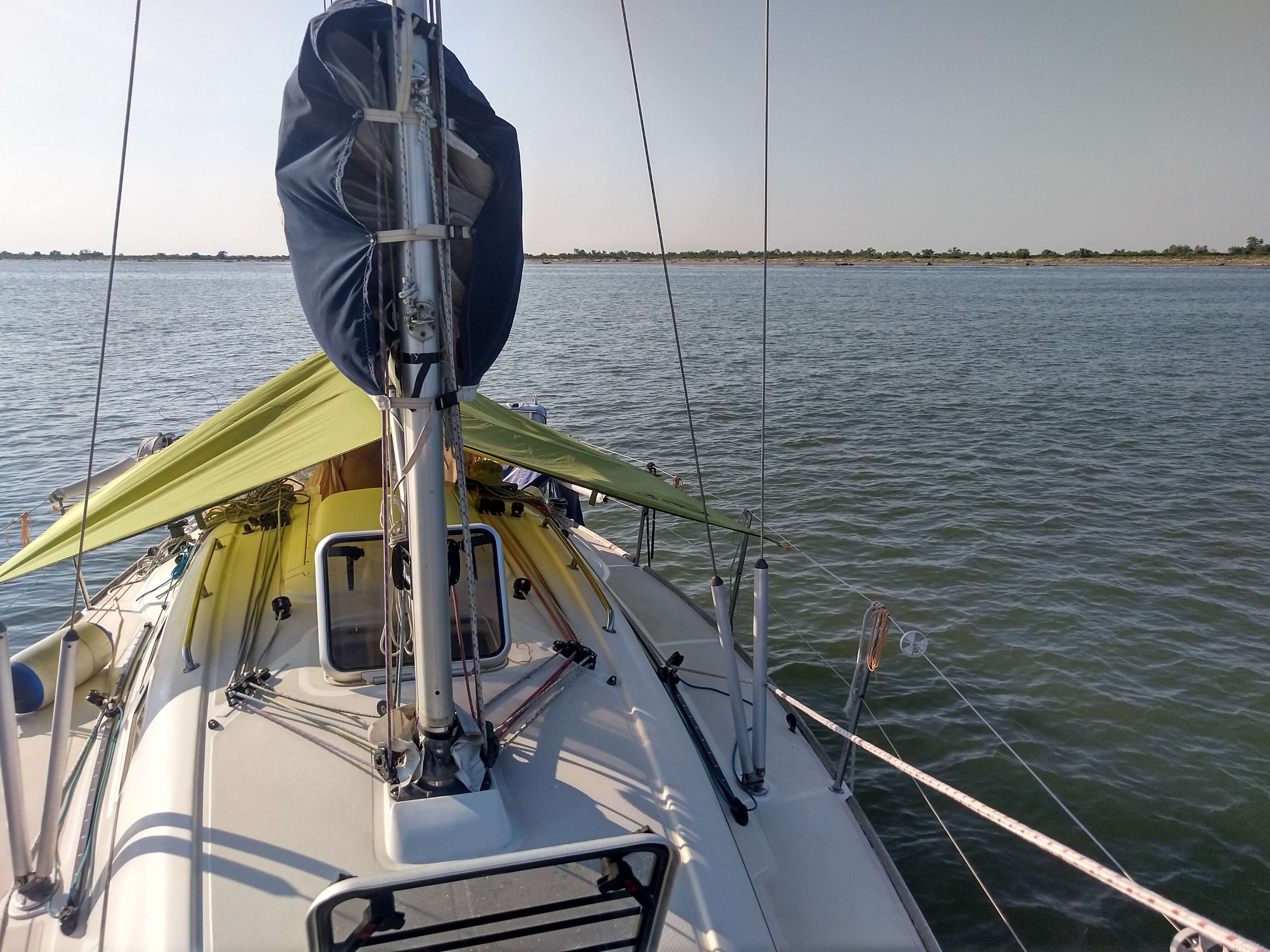
La tenda è sistemata sotto al boma: siamo pronti per goderci questo ancoraggio tranquillo.
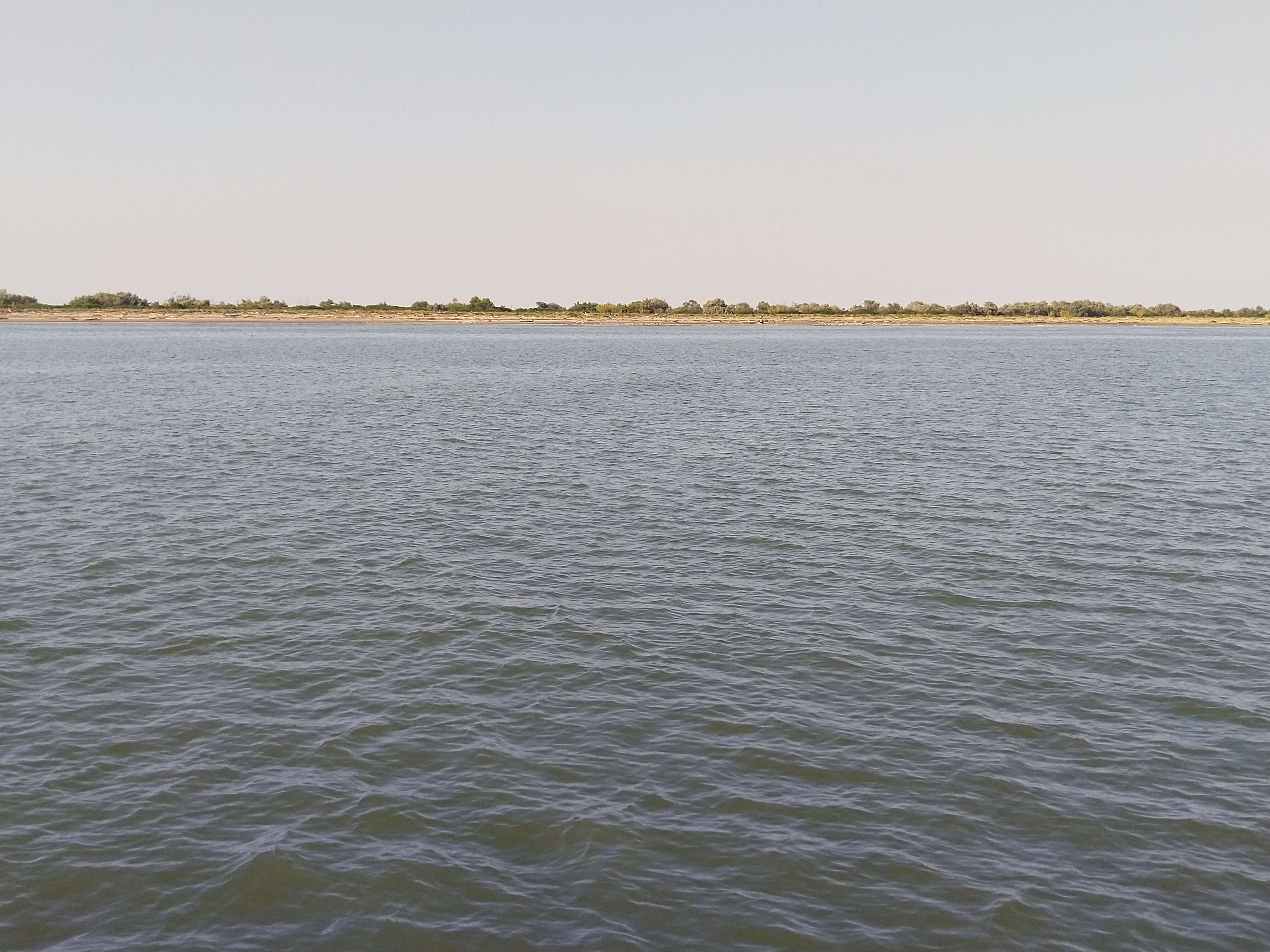
L'isola con le sue basse dune coperte di cespugli.
Mentre risciacquavamo le nostre stoviglie dalla poppa della barca abbiamo fatto un altro incontro inaspettato: un'anguilla di vetro che nuotava intorno alla nostra scaletta! Abbiamo dovuto fare delle ricerche per essere sicuri di cosa fosse e abbiamo così potuto imparare di più su questo animale straordinario e sul suo incredibile viaggio per arrivare fin qui: tutte le anguille nascono esclusivamente nel mare dei Sargassi, nel mezzo dell'oceano Atlantico, e affrontano un viaggio di 3 anni per arrivare fino all'Adriatico. Verso la fine della loro vita, a 20-30 anni, compiono lo stesso viaggio nella direzione opposta per accoppiarsi e poi morire. Davvero affascinante. Purtroppo questo complicato ciclo di vita è stato pesantemente influenzato da noi umani e oggi le anguille sono più a rischio d'estinzione dei panda, con un calo della popolazione del 96%.
Poi, poco prima del tramonto, abbiamo assistito alla processione dei pescherecci che uscivano per andare al lavoro. Il rumore dei loro motori si è protratto per tutta la notte, nonostante fossero lontani molte miglia dalla costa.
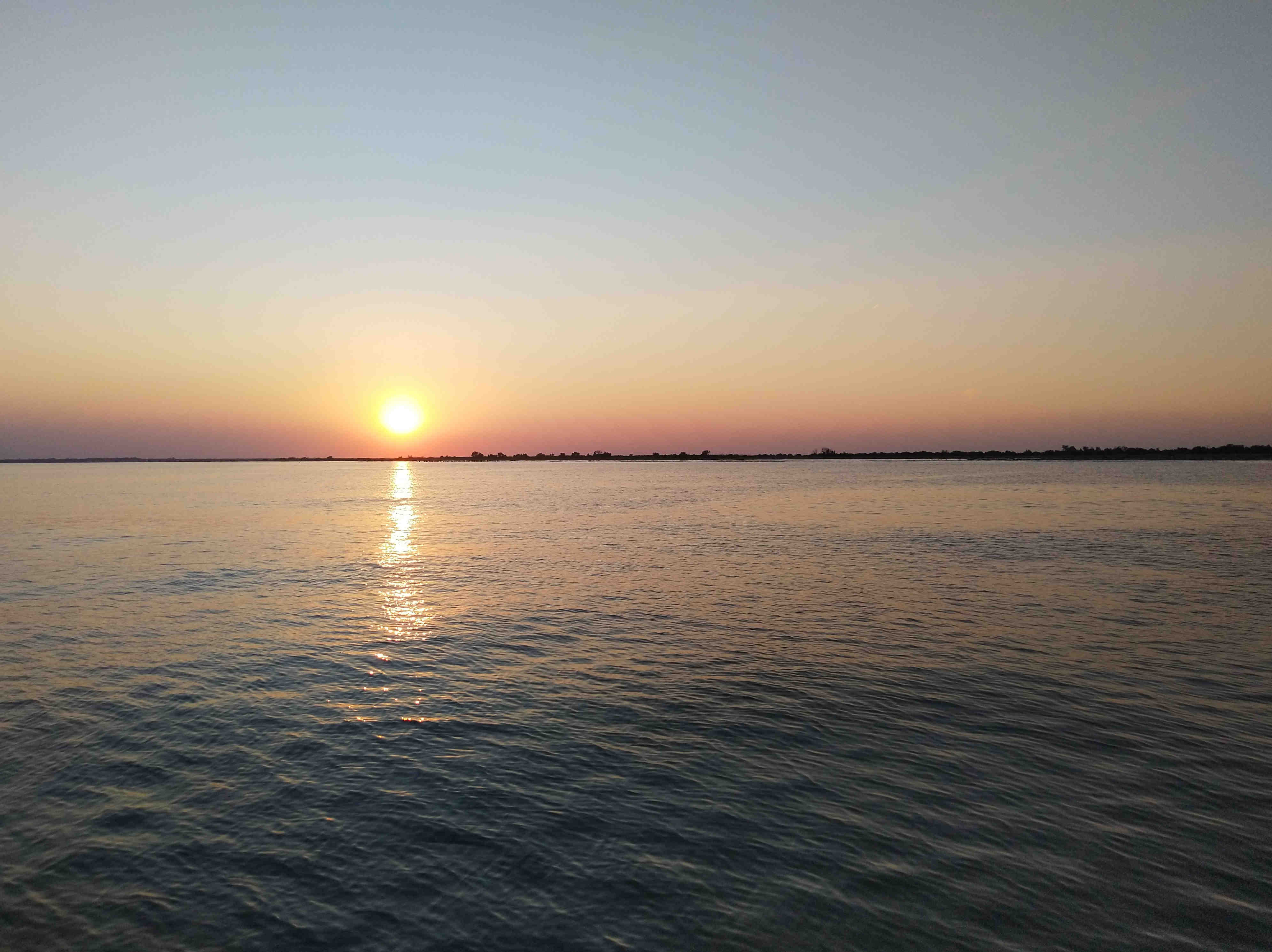
Guardando il bellissimo tramonto, siamo stati ancora più felici di essere lì
L'ancoraggio è stato un po' movimentato durante la notte: eravamo al riparo dal vento ma non dalle onde, ma abbiamo comunque dormito bene.
Il mattino successivo siamo partiti verso le 9, dopo la colazione e un'ultima nuotata. Mentre lasciavamo l'ancoraggio abbiamo visto altre due enormi tartarughe marine: è stata una vera sorpresa vedere questi animali nel nostro mare!
Abbiamo navigato bene a più di 5 nodi fino a metà strada, poi il vento, in maniera imprevista, è mancato del tutto. Dopo un po' di attesa e senza vento in vista abbiamo dovuto navigare a motore con il mare che diventava sempre più piatto, come non l'avevamo mai visto: sembrava uno specchio!
Era difficile distinguere dove finisse l'acqua e dove iniziasse il cielo, era surreale.
Con la mancanza di vento, il caldo è diventato insopportabile e quando siamo arrivati in vista dell'ingresso del porto abbiamo deciso di ancorare in 11 metri d'acqua per una nuotata e uno spuntino.
I successivi 4/5 giorni sono stati i più caldi da quando siamo a bordo di Lilith e abbiamo colto ogni occasione per andare ad ancorare vicino al porto per cercare una bavetta di vento e un po' di refrigerio.
Trip to Isola dell'amore
12 Jul, 2024
The west coast of the northern Adriatic sea doesn't offer much protection for anchoring due to its conformation: there are no bays and the only shelter is inside the many lagoons created by the river Po's mouth. The problem here though is the low depth and the everchanging sea-bed because of the sand brought by the rivers which creates sand banks. This is especially dangerous for a sailboat because of its draft.
Nevertheless we were motivated to spend our first night at anchor and as soon the right weather window arised (with low winds and little swell) we decided to go for it: since some time while scouting the sorrounding area for nice places to see, we noticed the "Isola dell'Amore" (Love Island). Our destination was set.
It's a thin stripe of sand, about 6 km long and 300 m wide. The only structure on it is a lighthouse and the only inhabitants are birds that found here the perfect place for nesting. There are more than 350 species on this small island which closes the "Sacca di Goro" (Goro's Lagoon).

Satellite view of the Isola dell'amore and the Goro's Lagoon north of it.
On Monday morning, after a good breakfast, we set sail toward our destination.
The navigation was quite easy: the only danger is a huge mussels farm that we decided to leave to the west of our route. And the floating logs brought offshore from the rivers' mouths.
We took the chance to test our auto-pilot which worked fine, although we noticed some needed improvements (more about this in one of the next posts).
This gave us the chance to spend the trip sitting in the sails'shadow and controlling the boat by the autopilot's remote control to avoid the debris.

Our tracks and our stops. In green the way there and in red the way back.
During the trip our first unexpected encounter: we saw a baby turtle slowly swimming belly up!
We completed the 20 NM trip in 4 h and 30 m, averaging 4,4 kn: we had really little wind ( as expected ) and at the end, when we had the island already in sight we had to motor a bit when the wind completely died.
Finally we could drop our anchor in 5m of water and we found ourselves completely alone with only hundreds of screaming birds and flocks of seagulls, flamingos, cormorans and many more birds we coudn´t recognise flying by.
Time to tidy up the boat, set the boom tent and it's swimming time! Finally some fresh clean water: unfortunately this year there's an algae-overgrowth problem in the Adriatic sea, and we were so happy to have this part of clean sea only for us.
We spent the rest of the day with refreshig dips, scouting the shoreline with the binoculars to spot the birds, watch the fishes jumping out of the water all around us and having a well deserved dinner: what a paradise!

Boom tent is set: ready to enjoy the peaceful anchorage.

The low-lying sand island with its bush vegetation.
While rinsing our dishes from the back of our boat we had the next unexpected encounter: a glass-eel swimming around our bathing ladder. We had to research to be sure what it was and we got to learn more about this amazing animal and its incredible journey to get here: all the eels are born in the Sargassum sea in the middle of the Atlantic ocean and they endeavour a 3 years long trip to get here. Toward the end of their life they will be ready to make the same trip in the opposite direction to mate and then die. So fascinating. Unfortunately this complicated life cycle is being heavily effected by us humans and nowaday eels are more endangered than pandas, with a 96% population drop.
Then right before the sunset we got to see the procession of fishing boats heading out for work. Their noise went on for the whole night albeit being many miles offshore.

Beatiful sunset. While watching it, we felt really happy for being there.
The anchoring became a bit rolly during the night: we were sheltered from the wind but not from the swell but nevertheless we had a decent night of sleep.
The morning after we left around 9 after brakfast and the last swim. While leaving the anchorage we saw other two huge sea turtles: we still are amazed that we could see this animal in our sea.
We could sail nicely at over 5 Kn till half of the way then the wind died out completely, unforecasted . After waiting a bit and with no wind in sight we had to motor sail with the sea becoming flatter and flatter as we've never seen it: so flat that it become like a mirror and it was hard to distiguish where the water ended and where the sky started. It was surreal.
With the lack of wind it became unbearably hot and when we were in sight of the harbour entrance we decided to anchor in 11m of water for a much needed swim and a snack.
For the next 4/5 days it was the hottest we ever experienced since being on board of Lilith and we took any chance we could to go anchor nearby the harbour to try to find some moving air to take a breath.